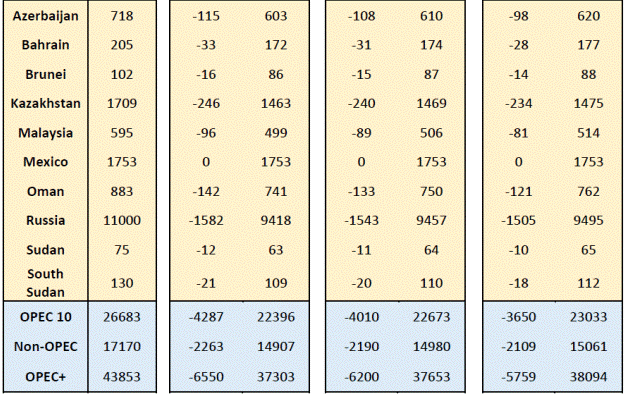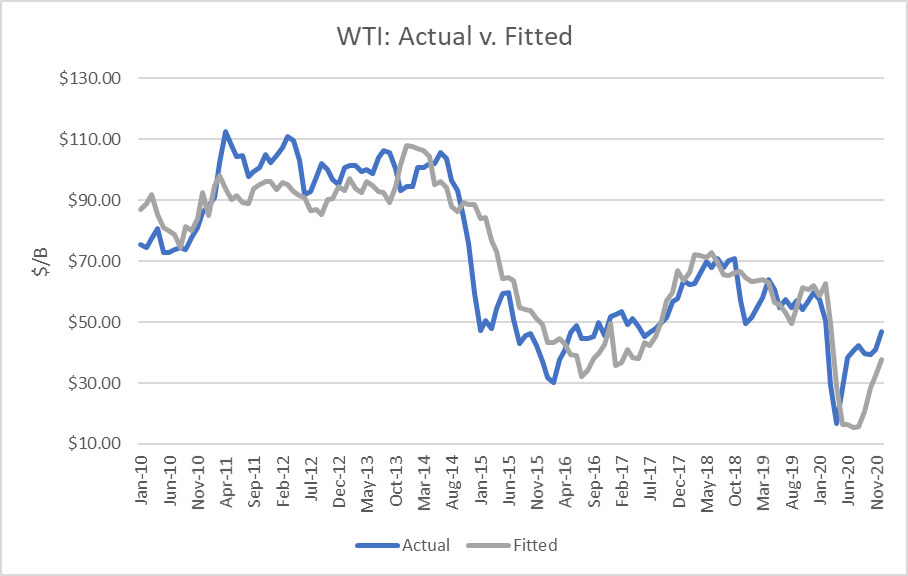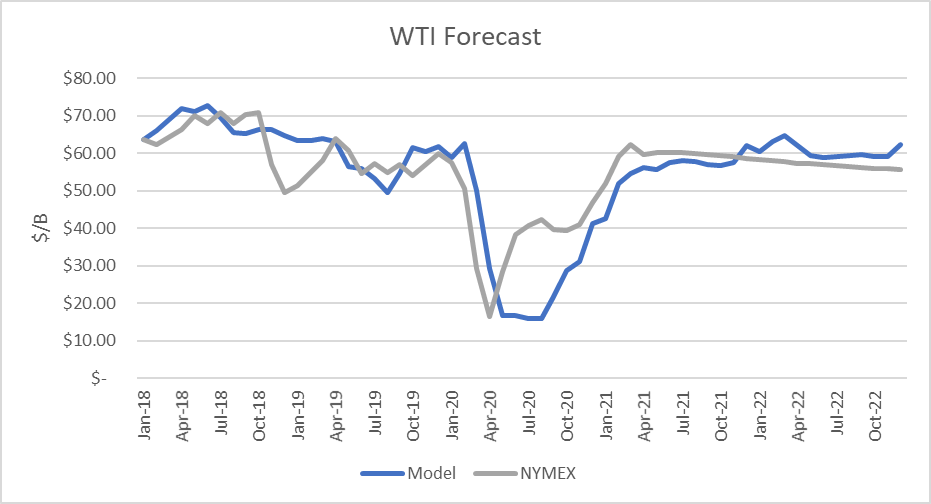The Energy Information Administration released its Short-Term Energy Outlook for April, and it shows that OECD oil inventories likely peaked at 3.208 billion in July 2020. In March 2021, it estimated stocks dropped by 19 million barrels to end at 2.932 billion, 32 million barrels lower than a year ago.
The EIA estimated global oil production at 93.47 million barrels per day (mmbd) for March, compared to global oil consumption of 96.0 mmbd. That implies an undersupply of 2.53 mmb/d or 78 million barrels for the month. That implies non-OECD stocks dropped by 59 million barrels.
For 2021, OECD inventories are now projected to draw by net 149 million barrels to 2.877 billion. For 2022 it forecasts that stocks will draw by 1 million barrels to end the year at 2.876 billion.

The EIA forecast was made incorporates the OPEC+ decision to cut production and exports. According to OPEC’s press release April 1, 2021:
“The Meeting approved the adjustment of the production levels for May, June and July 2021, while continuing to adhere to the mechanism agreed upon in the 12th OPEC and non-OPEC Ministerial Meeting (December 2020) to hold monthly OPEC and non-OPEC Ministerial Meetings to assess market conditions and decide on production level adjustments for the following month, with every adjustment being no more than 0.5 mb/d.”
The adjustments to the production level for May to July 2021 will be implemented as per the distribution detailed in the table below.


The EIA has assumed the following OPEC production levels for its STEO:

Oil Price Implications
I updated my linear regression between OECD oil inventories and WTI crude oil prices for the period 2010 through 2020. As expected, there are periods where the price deviates greatly from the regression model. But overall, the model provides a reasonably high r-square result of 82 percent.

I used the model to assess WTI oil prices for the EIA forecast period through 2021 and 2022 and compared the regression equation forecast to actual NYMEX futures prices as of April 13. The result is that oil futures prices are presently overpriced through November 2021 but then underpriced through the forecast horizon ending December 2022.

Uncertainties
April 2020 proved that oil prices can move dramatically based on market expectations and that they can drop far below the model’s valuations, whereas prices in May through March proved that the market factors in future expectations beyond current inventory levels.
In addition to the uncertainty of how deeply and how long the coronavirus will disrupt the U.S. and world oil consumption, a newer issue is how fast the vaccine will be deployed in the U.S. and worldwide. The pace of deployment has been relatively slow in Europe, and some countries, such as France and Spain, have reinstated lockdowns due to a new wave.
In the U.S., Georgia became the third state to shut down a Johnson and Johnson site due to side effects. In Michigan, the pandemic is spreading rapidly, and the CDC has recommended more restrictions.
Another issue is how long OPEC+ will constrain production, knowing that high prices provide an incentive to other producers, such as shale, to restore their production.
Another uncertainty is whether the U.S. will lift sanctions on Iran while rejoining the Iran nuclear deal. Biden has clearly stated that he wants the U.S. back in the deal. That could put around 2 million barrels a day back into the world market.
Conclusions
Given the recovery in oil prices, some are extrapolating further rises to $100 per barrel. The inventory forecast above clearly does not support such a rise.
A projection of $100 also does not consider supply-side responses. It also ignores the now-likely lifting of Iranian sanctions. Twenty-seven Senate democrats have urged Biden to rejoin the deal, writing in a letter:
“We strongly support returning to the JCPOA and using a ‘compliance for compliance’ approach as a starting point to reset U.S. relations with Iran. Should Iran be willing to return to compliance with the limitations set by the JCPOA, the United States should be willing to rejoin the deal and provide the sanctions relief required under the agreement.”
Check back to see my next post!
Best,
Robert Boslego
INO.com Contributor - Energies
Disclosure: This contributor does not own any stocks mentioned in this article. This article is the opinion of the contributor themselves. The above is a matter of opinion provided for general information purposes only and is not intended as investment advice. This contributor is not receiving compensation (other than from INO.com) for their opinion.
